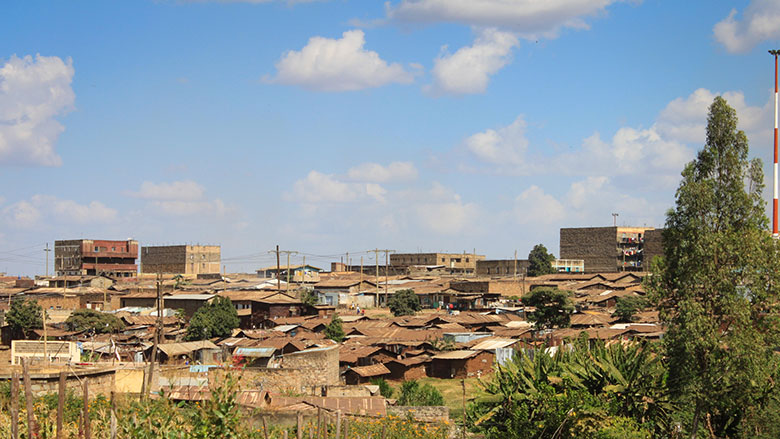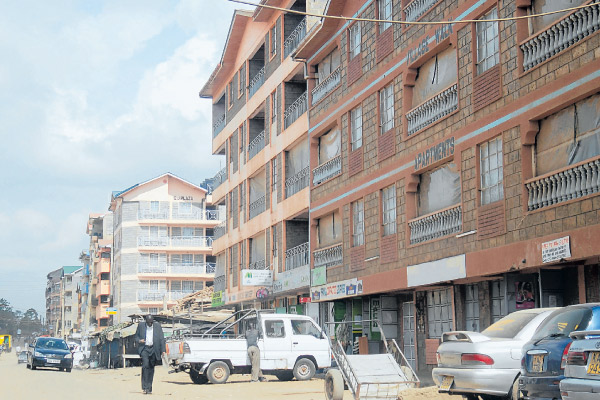Submitted by Momoh Kakulatombo
Equitable Housing Approaches in Nairobi
Kenya Architecture News - Feb 09, 2018 - 09:58 17916 views

Taking a scenic route through the city core to periphery areas is to encounter growing neighborhoods of apartments, contemporary and colonial-style homes, and in between witnessing the transforming edges of a community of urban poor in slums. Residential Housing in Kenya’s urban areas is a pressing issue. The construction of new living space in and around urban areas is continuous and visible wherever you go. This spatial increase is an outcome of urbanization.
The scenery of development is perpetual because of urbanization, the continuous social process whereby cities grow and societies become more urban. In 2012, a report by Acumen Fund estimated Nairobi’s housing deficit to be growing at a rate 85,000 units per year. Tallied at this rate, the estimated total housing deficit today would stand at 510,000 housing units into 2018. The rate of the housing deficit presents a growing challenge to stakeholders.

Image © Martin Tairo
Population Statistics
As a recent World Resources Institute working paper shows, housing solutions that achieve affordability depend upon two other interrelated qualities: adequacy and tenure. Based on this explicit socio-economic value of a housing unit, a wholesome understanding comes into view. “The global affordable housing gap is currently estimated at 330 million urban households and is forecast to grow by more than 30 percent to 440 million households, or 1.6 billion people, by 2025.” Stakeholders within the housing market are preparing for this population increase in many ways, and providing market access to many in the spirit of social entrepreneurship is a profitable outcome.
26.2% of Kenya’s current population is urban (13,029,800 people in 2018), up from 25.8% in 2017, according to worldometer.info. Natural increase together with the continued influx of nationals – rural/urban migration – occurs because urban centers are “associated with higher levels of literacy, better health, and greater access to social services and amenities alongside the fact that the median age of Kenya stands at 19.2 years, we can reflect that an independent, youthful population compose a majority of the urban scene."

Image © Sarah Farhat / World Bank
The life considerations of these migrating people are an important aspect difficult to assay. Generally, economic data shows that household incomes are growing, especially for the lower middle-to-middle class nationals driven by the fact that most households have both partners working and earning a steady income. According to a 2017 Real Estate study, “This has resulted in increased demand for formal housing, thus pushing prices up.” Many firms in Real Estate target nationals in higher income brackets for the main reason that houses in this price range are bought directly, or that buyers can access mortgages. The effect that grows is an observed an excess demand for and limited supply of housing units in the low-income segment of the market.

A view from Kenya's housing. Image © Denis Mukundi / World Bank
A detailed view of the demand of the current housing gap is primarily comprised of individuals within the middle-to-low and low-income groups. For this majority informal housing in the form of slums is the temporary answer to their habitation issues. Slums occupy two percent of Nairobi’s land, yet they are home to half the city’s population. Mukuru slums in Nairobi is current the location of a community upgrading initiative whose activities are being facilitated by SDI-Kenya, highlighted in an article by the World Architecture Community.
Developing countries like Kenya are urbanizing at historically high rates. In a 2014 report the UN published, they report that, “Africa and Asia are urbanizing faster than the other regions of Europe, Northern America and Oceania and are projected to become 56 and 64 per cent urban, respectively, by 2050.” Blending the solutions of private and public sector resources is the key to innovatively managing urbanization.

A view from new high-rise building blocks at Roysambu, Nairobi on October 24, 2013. Image © Denish Ochieng / Daily Nation
Housing History in Kenya
The value that urban centers like Nairobi and other municipalities in Kenya carry is economic priority from the colonial era in to the post-colonial era. The unavailability of low-cost residential homes further away from the CBD today may be due to property value being chiefly determined by property location, long commutes to the city center are less attractive in the eyes of home owners. Incorporated in 1899, Nairobi’s history as a colonial district has influenced its land and property laws today. “By-and-large, large tenure was administered through a system of customary laws and can vary depending on ethnic groups, predominant land use or cultural practices”, according to a World Bank analysis. Further research into the legal background may upturn the present day impediments.
Migration of rural peoples has pushed the public sectors’ social services, administration and infrastructure to the limit. A devolved government structure continues to make it easier for executive power to re-write actionable policies, and evenly spread economic potential on the ground. On the housing front, the Government of Kenya has recently unveiled a plan to spend sh1 trillion (USD 9.9 Billion) on the construction of over a million low cost homes in major towns by 2022. Large projects like Umoja Estate in the past have not succeeded to sustain housing for the low-income class. An alternative method of planning is likely to be the mode of organization.
However, the government has made room for the private sector to improve their capacity to provide housing. Incentivizing more building activity by scrapping levies, and a tax reduction for investors who put upwards of 400 affordable homes make room for private entities to increase their capacity for low-cost housing construction. Economic vision including the private sector is a strategy to help them achieve their different goals.
Connecting Approaches to Affordable Housing
Social entrepreneurship is the gateway to innovative success. It is evident that a creative understanding among private stakeholders shows in their varied range of flexible “Design and Build” packages for potential buyers to choose from. These products are fully costed. The understanding of consumer needs – specifically affordability – enables developers to provide housing solutions to a low-income segment of the market.
Urithi Sacco is a co-operative society targeting low-income earners. They manage a rent-to-own program enabling tenants to move into the units they choose on the commitment that the tenants pay small installments on top of rent towards a time that the tenants own the property.
Due to significant changes e.g a fast changing society, unpredictable economy, building and construction industry firms have to adapt quickly to stay competitive. The above methods and approaches delivers affordable housing in a secure manner and provides sales opportunities to developers. Employing the value of equity to access the lower market segments benefits housing suppliers. It is an attitude slowly shifting the status of Kenya’s current housing situation.
Top image: From Moyale Mall rooftop in Nairobi. Image © Twitter
